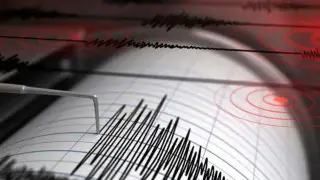
@VnsAnuTi
On Friday, Catania Airport on the Italian island of Sicily was forced to close due to the eruption of Mount Etna, Europe's largest active volcano. The eruption spewed volcanic ash into the sky, rendering the runway unusable and leading to the suspension of all arrivals and departures.
"The runway at Catania Airport is unusable due to volcanic ash fall: both arrivals and departures are suspended," announced the airport management company in a statement. They projected that flights would resume at 3:00 PM (01:00 PM GMT) and urged travellers to check their flight statuses before heading to the airport.
Italy's National Institute of Geophysics and Volcanology (INGV) reported on X, formerly known as Twitter, that ash plumes from the eruption had reached heights of up to 4.5 kilometers. Social media footage from Friday depicted the streets of Catania's city center blanketed in thick layers of black ash, which significantly slowed down traffic.
#MountEtna, Europe's most active #volcano, erupted on July 4th, spewing ash and smoke into the sky. The eruption forced the closure of #Catania Airport in #Sicily. This is the first eruption from Mount Etna in four years. Increased volcanic activity prompted #Italy's Civil… pic.twitter.com/DfHy7I97Du
— अनुराग 🇮🇳 (@VnsAnuTi) July 5, 2024
Mount Etna, standing at a towering 3,324 meters (10,905 feet), has experienced multiple eruptions in recent decades. In the days leading up to the airport closure, the volcano's crater had been emitting fountains of scorching lava and releasing ash, which eventually settled on Catania Airport.
In addition to the disruptions caused by Mount Etna, Italian authorities issued a red warning for another volcano, Stromboli, located on the island of the same name north of Sicily. Stromboli's eruption also produced significant ash clouds. Known for its near-constant activity, Stromboli rises 920 meters above sea level, with its base extending 2,000 meters below the sea.
Catania Airport is a crucial transit hub for millions of passengers annually, providing connections to eastern Sicily, one of Italy's most popular tourist destinations. The airport's closure highlights the significant impact volcanic activity can have on air travel and local tourism. As authorities work to manage the situation, travellers are advised to stay informed about flight statuses and potential delays.













Copyright © 2025 Top Indian News
